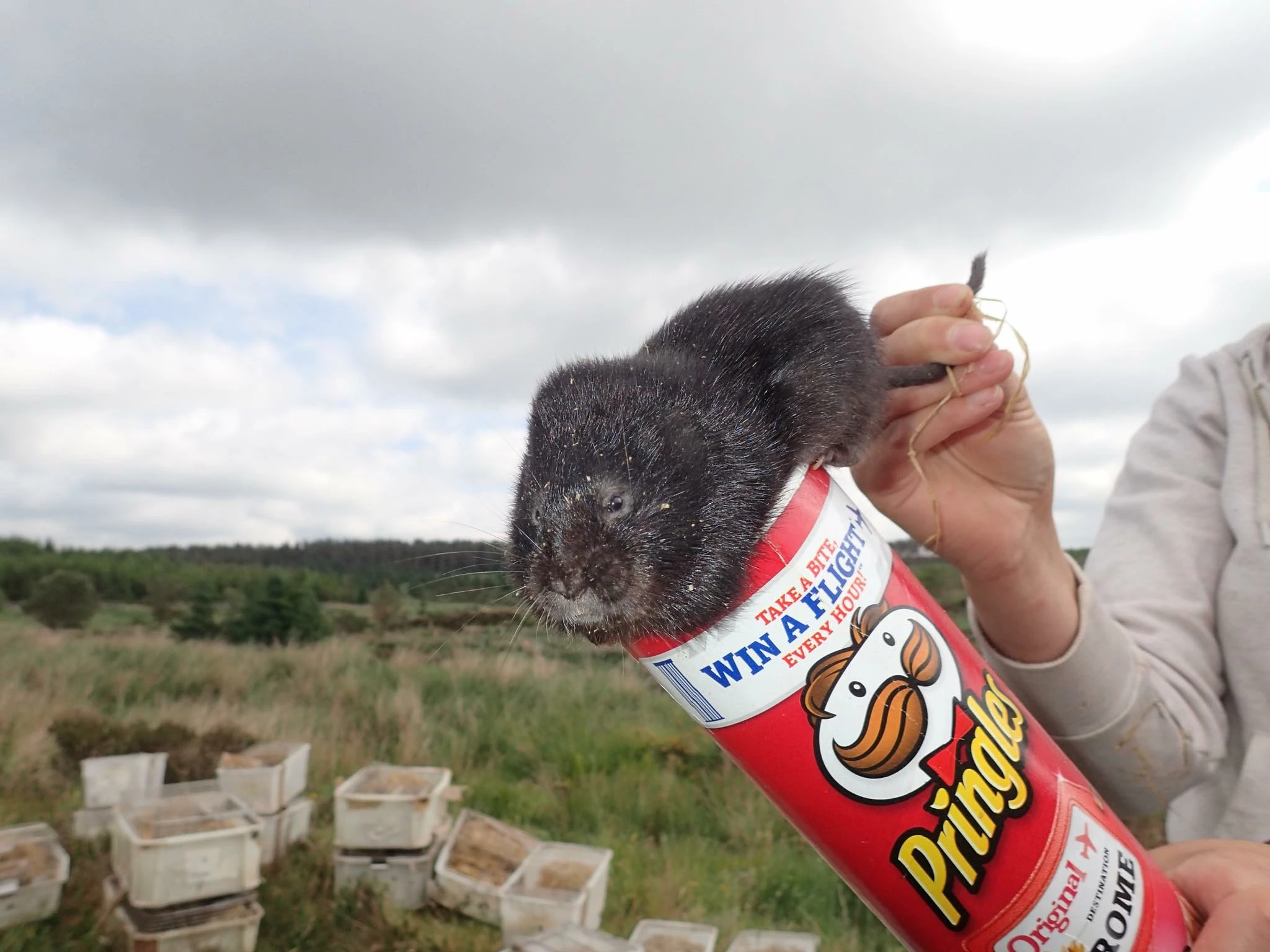
Member Article
Third Kielder water vole release a great success
One hundred and sixty water voles have been released into streams flowing into the north shore of Kielder Reservoir, Deadwater Burn near the Kielder campsite and Kielder Burn by the ‘Restoring Ratty’ water vole reintroduction project. Since June 2017, 730 water voles have been released into the Kielder area. The released voles have been bred in captivity from individuals captured in the Pennines and North Yorkshire in 2017 and over the border in Scotland in 2016.
All signs indicate that water voles released in June and August 2017 are thriving well with many of them travelling up to 12km from their release sites, with potentially breeding voles being found around 5km from their original release sites. A further 260 voles are set to be released this August.
‘Restoring Ratty’ is a five-year partnership project between Northumberland Wildlife Trust, Forestry Commission England and Tyne Rivers Trust, aimed at the reintroduction of water voles to the Kielder Water and Forest Park area of Northumberland. It has all been made possible by National Lottery players through a grant of £421,000 from the Heritage Lottery Fund (HLF).
The water vole was once a common and familiar mammal along our ditches, rivers and streams. Unfortunately, habitat declines, pollution of waterways, industrialisation of agriculture, housing development and predation by American mink that escaped from fur farms, have all led to severe water vole declines since the 1960s.
Out of all the staff and volunteers at Kielder this week, probably the most excited were 55 pupils from two schools who had the experience of a lifetime when they were invited to roll up their sleeves and help the project team with the releases.
The first group to have a ‘Ratty’ experience were eighteen pupils from Terrington Hall School in North Yorkshire.
The Year 5 pupils, aged between 9 and 10 and their teacher Mary-Ann Pilmore are no strangers to water voles, having previously helped to trap six of them near their school for the captive breeding programme as part of the project’s three-way schools partnership.
Inspired by their efforts, the pupils were so keen to release the babies from the voles they helped to trap, they were prepared to travel over 125 miles and stay overnight at the Calvert Trust.
The second group of pupils only had to travel from Bellingham Middle School but they were no less excited. Escorted by teacher Anna Veitch, 35 year 5 pupils aged between 9 and 10, travelled to the Cat Cleugh Field (adjacent to Kielder Village) in mini buses provided by the Calvert Trust.
The school was selected by the Restoring Ratty project as it is so close to the release site and was decided it would be a wonderful opportunity for the pupils to get ‘hands on’ with the wildlife which is literally on their doorsteps. At the end of a busy week, Graham Holyoak, River Projects Manager at Tyne Rivers Trust, the organization that led the first phase of the project to create a safe environment ready for re-population says: “This is our third release after two successful releases in 2017 taking numbers released up to 730. Monitoring of the voles released in 2017 have shown they are doing well so this third release will help boost the breeding population in Kielder by allowing individuals spreading out to find partners.
“Releases consist of an intense 10 days of work and the help of staff and volunteers from the partner organisations is invaluable - so a huge thank you, and roll on August for the fourth release which will be even bigger.”
This was posted in Bdaily's Members' News section by Northumberland Wildlife Trust .
Enjoy the read? Get Bdaily delivered.
Sign up to receive our daily bulletin, sent to your inbox, for free.




 test article 123456789
test article 123456789
 hmcmh89cg45mh98-cg45hm89-
hmcmh89cg45mh98-cg45hm89-
 test456456456456456456
test456456456456456456
 test123123123123123123
test123123123123123123
 test xxxdiosphfjpodskhfiuodsh
test xxxdiosphfjpodskhfiuodsh
 Savour the flavour: North Tyneside Restaurant Week returns for 2024
Savour the flavour: North Tyneside Restaurant Week returns for 2024
 Six steps to finding the right buyer for your business
Six steps to finding the right buyer for your business
 Stephen signs off on a special night
Stephen signs off on a special night
 Life’s a Peachaus: Gillian Ridley Whittle
Life’s a Peachaus: Gillian Ridley Whittle
 Making a splash: Phil Groom
Making a splash: Phil Groom
 Making workplace wellbeing a priority
Making workplace wellbeing a priority
 A record of delivery, a promise of more: Ben Houchen
A record of delivery, a promise of more: Ben Houchen